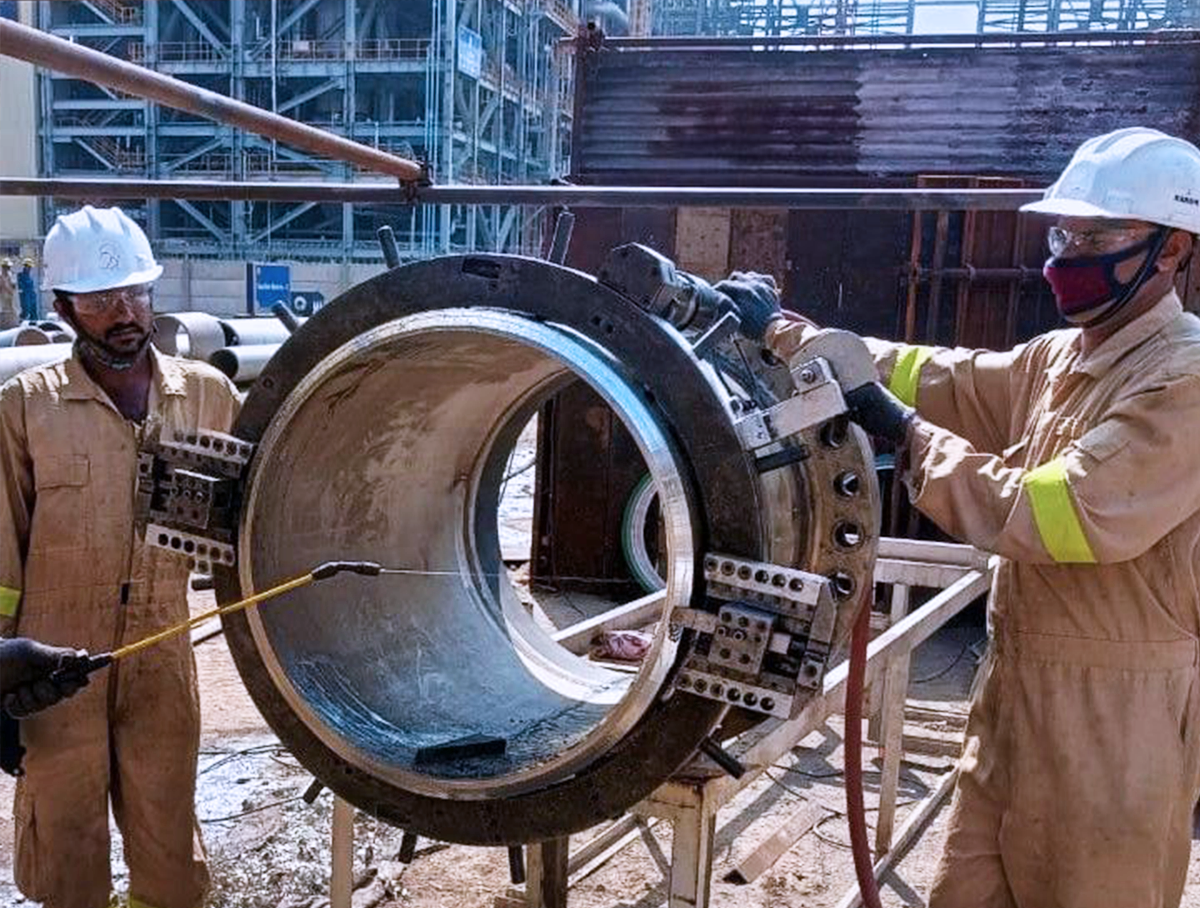Pipe beveling is the formation of an angle between the edges of pipes or tubes; when the pipe end is created with a certain degree in an angle, it is called a bevel or bevelled end. Pipe beveling is a crucial step in the welding preparation process of pipe joining; the quality achieved by the bevelled pipe influences the quality of the welding.
So correct pipe preparation ensures the best possible weld joint. In addition to welding, beveling can be used to deburr the cut pipe ends for safety and aesthetic reasons. There are several methods for preparing pipe beveling tool ends for welding. In this article, the types and benefits of pipe beveling machines are discussed.
Is bevelling or beveling correct?
Beveling and bevelling are both accurate. The English US word is “pipe beveling,” whereas the English UK spelling is “pipe bevelling.” Other frequent names for this application procedure are pipe chamfering, pipe tip working, pipe end preparation pipe preparation.
How Can a Pipe Bevel?
Bevel pipes in a variety of ways. Employing a torch or plasma cutter, a manual grinder, or portable or fixed beveling equipment.
A manual grinder: When compared to employing pipe beveling equipment, the manual grinding approach is the most expensive and hazardous. It takes a while, and you need a good operator. Furthermore, maintaining the same level of quality throughout several pipe operations is practically hard to do without making a lot of mess.
Plasma cutter: Another pipe-end preparation machine is a torch or plasma cutter. Compared to a manual grinder, it produces output more quickly, but it also has certain disadvantages. It wouldn’t be a safe procedure to prepare the level area at the pipe’s end by hand. Once more, the resultant command will be erratic. Furthermore, you cannot utilize this pipe beveling process on all materials. This would limit your manufacturing flexibility.
Portable or fixed beveling equipment: Compared to the first two techniques, a handheld beveling machine is significantly safer and is available in several configurations.
- The main benefit of these portable machines is their portability, which saves time because the user may carry the device to the pipe.
- They are practical to employ on building sites or for maintenance tasks.
- They can’t, however, fulfil the high manufacturing needs.
For cold cutting machine for pipe beveling, stationary beveling machines offer the most variety and adaptability. Utilizing various tool combinations, one may produce nearly any type of pipe bevel form. Their purpose is to fulfil elevated output demands within a secure operational setting. Furthermore, it is simple to include stationary pipe beveling equipment with computerized manufacturing lines, negating the need for the operator to be present at all times.
The standard carbide-eliminating inserts are inexpensive to replace when necessary, simple to set up and require little maintenance, guarantee the cheapest and fastest cycle time per bevel, offer a wide range of machining options and can machine multiple pipe or tube materials, and do not require a skilled operator, to name a few advantages of stationary beveling machines.
Not to mention, stationary pipe beveling equipment guarantees consistent pipe bevel quality, which has a direct impact on pipe welding quality. But safety is always the primary priority. Whatever the needs, the first step in choosing the best approach is to evaluate all possible safety concerns on the job site.



